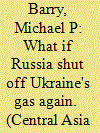|
|
|
Sort Order |
|
|
|
Items / Page
|
|
|
|
|
|
|
| Srl | Item |
| 1 |
ID:
118749


|
|
|
|
|
| Publication |
2012.
|
| Summary/Abstract |
What would happen to the economies of the former Soviet Union if they finally implemented a full-fledged free trade agreement? How would this change sector output, GDP, prices, international trade, and the economic welfare of the nation? How would it affect the economies of the FSU's other trading partners? This paper attempts to address these and other issues through the use of a computable general equilibrium model (CGE). The model is a large, multi-regional, multi-sectoral, multi-factor system of simultaneous equations. It introduces the "shock" of zero tariffs between all FSU's trading partners, and solves for a new economic equilibrium. There are some political and practical obstacles to the completion of such a trade agreement, so this mathematical model in some ways is just a hypothetical experiment. But an analysis of trade effects can nonetheless be useful to any policymaker in the former Soviet space.
|
|
|
|
|
|
|
|
|
|
|
|
|
|
|
|
| 2 |
ID:
134126


|
|
|
|
|
| Publication |
2014.
|
| Summary/Abstract |
This paper asks the question: what would happen to the economies of the world should Russia completely shut off natural gas shipments to the Ukraine. Significant findings of this model include the following:
The impact of the gas shutoff is overwhelmingly concentrated in Ukraine and Russia, whose economies would suffer GDP declines of 2.47 percent and 2.16 percent, respectively. Perhaps surprisingly, the model suggests Eastern Europe would experience only a small decline in GDP (0.13 percent) and Western Europe's GDP would be unaffected. The GDP of gas-pruducing republics of the Other Former Soviet Union (FSU), major gas suppliers through the Russian pipelines, would decline by 0.75 percent.
While the impacts to overall GDP are possibly smaller than expected, effects to individual industry sectors in many countries are quite large. One response of Ukraine and Europe to the cessation of Russian gas is an attempt to replace supplies with domestically-produced gas. While output of natural gas decreases by 4.86 percent in Russia and 11.6 percent in the Rest of the Former Soviet Union, gas production increases in Ukraine, Eastern Europe, and Western Europe by 140.1 percent, 88.1 percent, and 12.0 percent, respectively (though note that each region starts with a small base). Production of natural gas increases in Africa (6.9 percent), the Middle East (5.2 percent), the United States (2.0 percent), and the Rest of the World (2.2 percent).
|
|
|
|
|
|
|
|
|
|
|
|
|
|
|
|
|
|
|
|
|